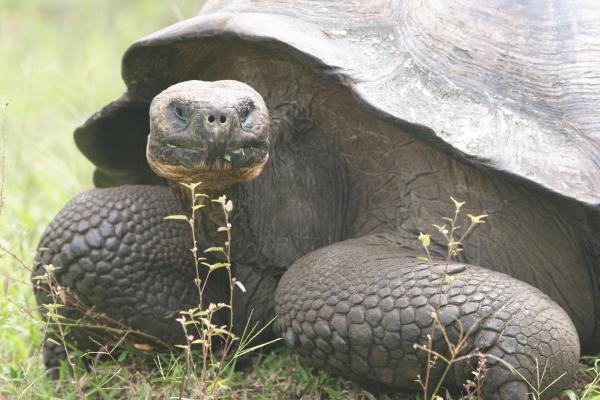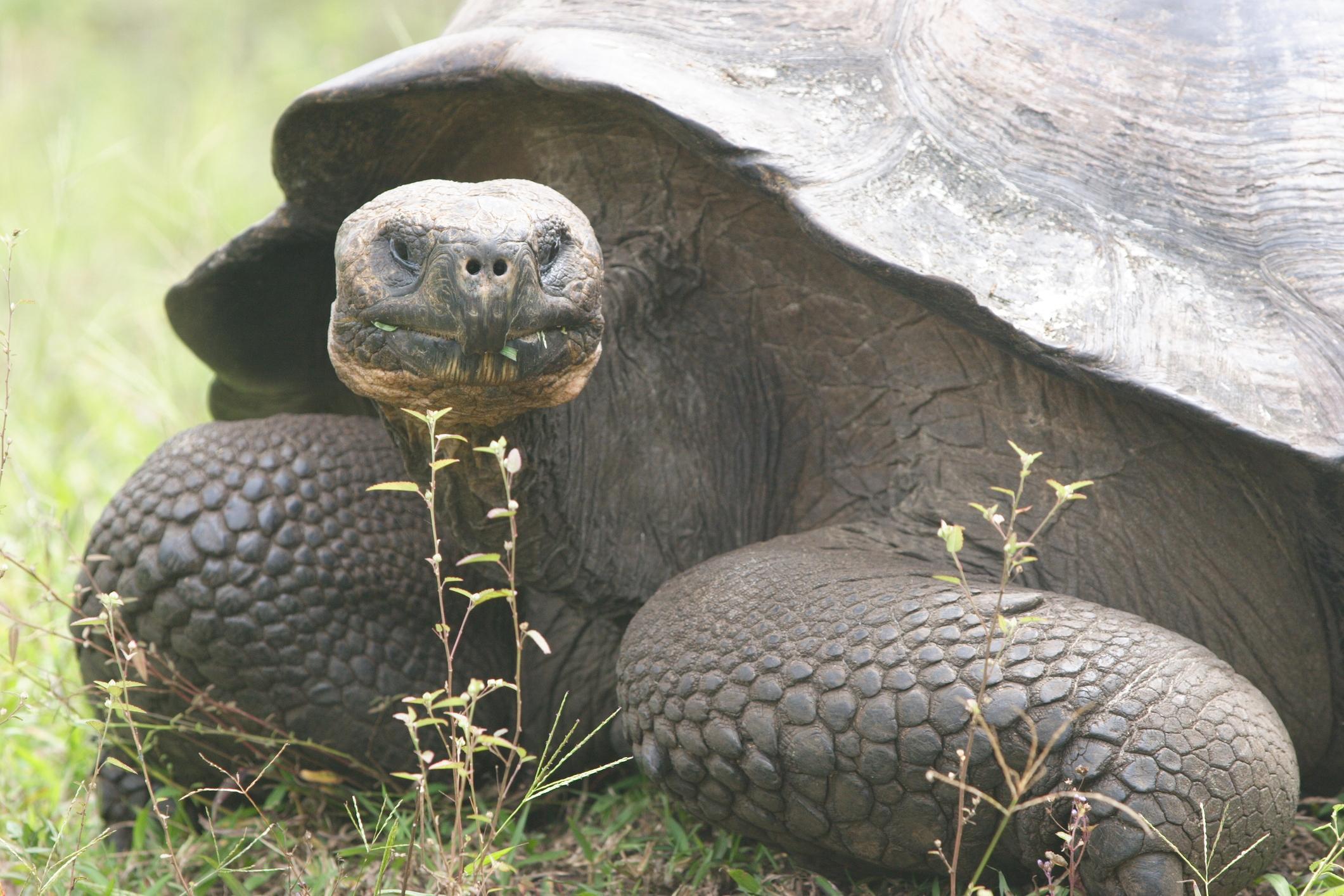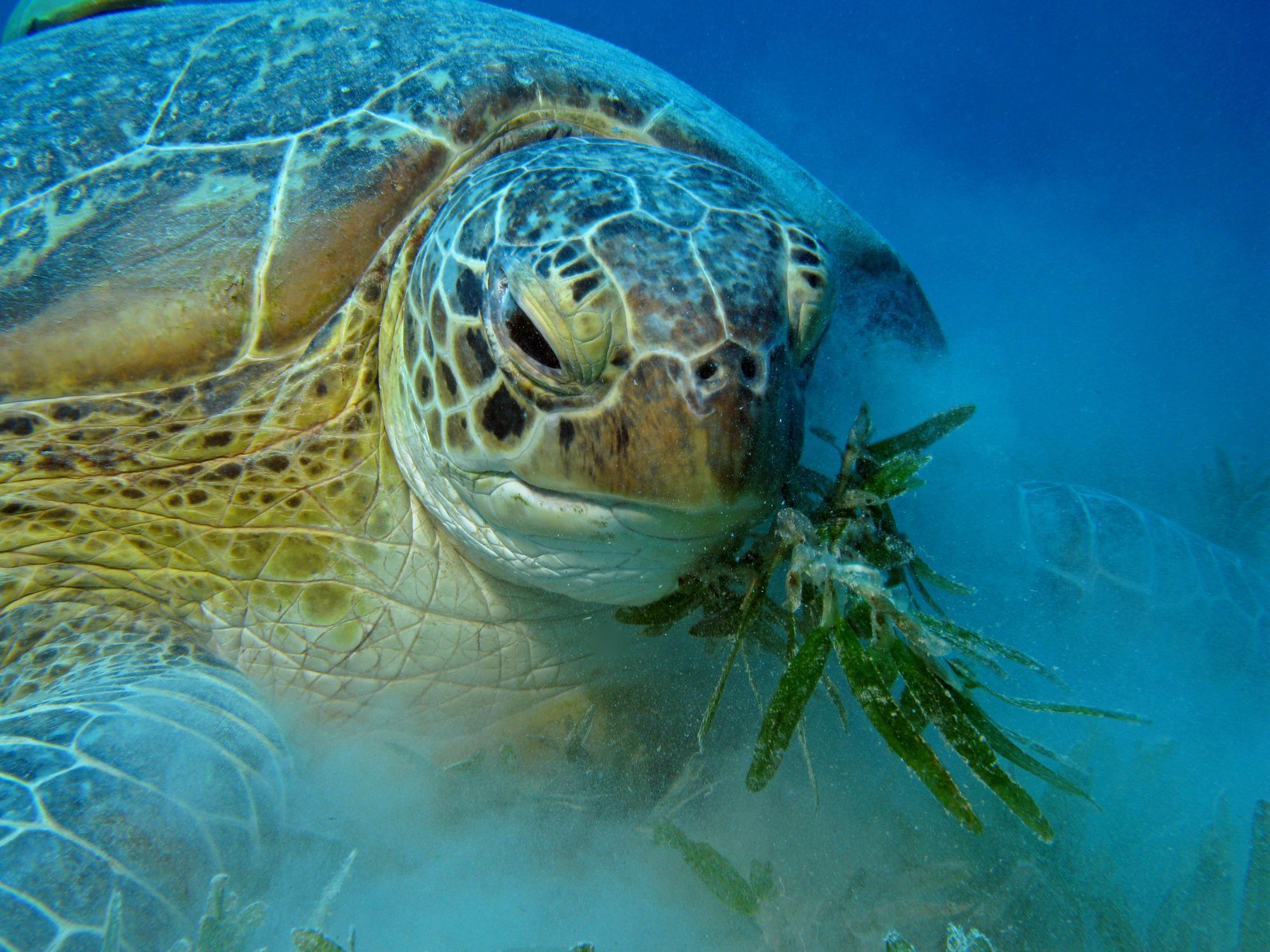How Long Do Turtles Live? - Longevity of Turtles


Turtles are an order of reptiles known as testudines. There are 360 living and recently extinct species of turtles, including land-dwelling turtles and freshwater turtles. Turtles are distinguished primarily by their solid shell, which protects their vital organs and from which their head, legs, and tail emerge. But there are many other amazing facts about these animals, one of which is their longevity.
The following AnimalWised article explains how long turtles live, both in the wild and in captivity.
Why do turtles and tortoises live so long?
Turtles are at significant risk from predators only during the first five years of life. After that, they are protected by their shell and the fact that they spend most of their time in their burrow. On the other hand, turtles can endure long periods of drought. They also have a very slow metabolism.
However, as with many other animals, the life expectancy of turtles, especially sea turtles, has been affected by human intervention, and many of the species are threatened with extinction or are in critical condition.
Why are turtles endangered?
There are only seven species of sea turtles left and six of them are in danger of extinction due to human-caused causes such as poaching, marine pollution, and climate change. Below, we explain in more detail what the biggest threats to the survival of these animals are:
- Climate change: the effects of climate change have significant consequences for sea turtles. Rising thermometers are changing the sexual relationships of these animals, whose sex depends on the temperature of the sand in which the eggs are laid. High temperatures lead to an increase in the proportion of female offspring, reducing reproductive opportunities and decreasing the genetic diversity of the species. Populations could be drastically reduced. Another direct consequence of environmental problems is habitat loss.
- Plastic residues: Plastic is one of the main enemies of these reptiles. Each year, an estimated 8 million tons of plastic end up in the ocean, a real trap for turtles and other marine animals. Turtles mistake the remains of this highly polluting material for jellyfish and drown when they try to eat them, or become entangled in fishing nets or other plastic. The issue continues outside the ocean on beaches, where trash and litter can trap hatchlings and prevent them from reaching the sea.
- Poaching and illegal trade: The meat of turtles is a sought-after food, and the eggs are considered an aphrodisiac in some countries. In these countries, the turtles are harvested unsustainably for sale in their bars and restaurants as a tourist attraction. In addition, there is a strong demand for the shells of these reptiles, since kinds of decorative objects and jewelry are made from them.
How long do turtles live?
Turtles are generally quite long-lived animals, living on average more than 50 years. There are even examples of individuals that have lived more than 100 years. However, as with many other animals, the life expectancy of turtles varies from species to species.
To get a better idea of how long turtles live, we need to take a closer look at some of the most common and widespread species:
- The gopher tortoise (Gopherus polyphemus): is a species of tortoise native to the United States that lives on sandy and dry soils with mostly herbaceous vegetation. The life expectancy of this species in its natural habitat ranges from 50 to 70 years.
- The western box turtle (Terrapene ornata): Native to the United States and Mexico, this species is another example of a land tortoise. On average, they live to be about 32 years old, but in the wild they usually reach a maximum life expectancy of 37 years.
- The desert tortoise (Gopherus agassizii): This is a North American species where something special happens in terms of life expectancy. Out of 15 eggs, only one manages to develop and live to be about 20 years old. When an individual reaches this age, the chances of a long life are very high, as it can live from 50 to 80 years.
- The Santiago Island giant tortoise (Chelonoidis niger darwini): It is one of the endemic species of the Galápagos Islands in Ecuador and is one of the typical giant tortoises of the region. They are very long-lived animals, with a life expectancy of 100 to 150 years.
- The Floreana giant tortoise (Chelonoidis niger niger): is a subspecies of the Galápagos tortoise endemic to the Galápagos archipelago. As in the previous case, they can live up to 150 years.
- The red-footed tortoise (Chelonoidis carbonarius): This species is typical of several South American countries, where it is very well distributed. It inhabits different types of forests and even savannah areas, avoiding muddy regions. Its life expectancy is about 50 years.
- The Indian star tortoise (Geochelone elegans): The species is native to the Indian subcontinent, where it inhabits different types of ecosystems such as forests and drylands. Life expectancy in the wild ranges from 35 to 85 years.
As you can see, the life expectancy of turtles varies greatly depending on the species, but there is no doubt that we are dealing with very long-lived animals.

How long do aquatic turtles live?
The actual age of a marine and freshwater turtle species is difficult to determine. What we do know is that sea turtles live a very long time, some can live up to 50 years or more. Most sea turtles take decades to become sexually mature, about 20 to 30 years, and remain actively reproducing for another 10 years. Like land turtles, the life expectancy of sea turtles and freshwater turtles varies according to species. Here are some examples:
- The loggerhead sea turtle (Caretta caretta): The loggerhead turtle is a species of sea turtle that is widely distributed throughout the world. Estimates of its life expectancy show that it lives between 30 and 62 years in the wild.
- The green sea turtle (Chelonia mydas): The green turtle, a cosmopolitan species, also has a long life expectancy. In this case, the species lives to be about 75 years old in the wild.
- The hawksbill sea turtle (Eretmochelys imbricata): The hawksbill sea turtle, is a critically endangered sea turtle. In the wild, it has a life expectancy of 30 to 50 years.
- Kemp's ridley sea turtle (Lepidochelys kempii): Nests primarily in North America, but also migrates to European waters. It has a life expectancy that can range from 30 to 50 years.
- The pond slider (Trachemys scripta): Native to North America, this species can live about 30 years in its natural habitat, which consists of shallow river banks, minimal currents and lush vegetation.
- The spotted turtle (Clemmys guttata): This is also a North American species that lives in freshwater bodies that are shallow and have some vegetation. Their life expectancy is over 20 years.
If you want to learn more interesting facts about turtles, do not miss this other article where we explain how do turtles reproduce.

How long do domestic turtles live?
Domestic turtles are divided into aquatic turtles and terrestrial turtles. As their names suggest, the former require a pond or aquarium for survival and the latter require as large a terrarium as possible in which to carry out their daily activities.
In general, turtles are not very demanding pets, although they have some special needs, because they are cold-blooded, like many reptiles. A well-cared for, well-fed tortoise, with the right environment, can live for many years. Listed below are some examples of how long the most common domestic turtles live:
- The common box turtle (Terrapene Carolina): This turtle has a shell that allows it to hide completely. The special design of her shell provides her with excellent protection in case she encounters a predator. It is a small turtle that can reach a maximum length of 15 centimeters. During its 80-year life expectancy, it requires an outdoor space, although it can also be kept in an aquarium. It is very important that the ambient temperature in which this turtle is kept is 15 degrees Celsius throughout the day, with some humidity to prevent the eyes and respiratory tract from drying out.
- The pond slider (Trachemys scripta): It can reach a length of 30 centimeters, although if it is a female, it will probably exceed this size. Normally, these turtles live up to 40 years. A moist and sunny aquatic habitat is essential for their survival. In winter, they usually hibernate at the bottom of the pond or aquarium.
- The wood turtle (Glyptemys insculpta): This species of turtle is easily recognized by its dark gray shell and orange body with black speckles. Another peculiarity of this species is that during the coldest months it chooses the water for hibernation, but when the good weather arrives it tries to move on land. Unlike other species, male wood turtles are usually larger than females. They reach a size of about 23 centimeters and weigh about one kilo. Wood turtles reach sexual maturity between 14 and 20 years of age and may live up to 50 years.
- The Russian tortoise (Testudo horsfieldii): Among domestic tortoises, it is one of the most common ones kept in households. In the wild, this tortoise usually lives to be 40 years old, but as a pet it can become a centenarian. They are characterized by unerring eyesight, which even allows them to recognize people, as well as a highly developed sense of smell and high sensitivity to ground vibrations. It is important for the Russian tortoise to live in a spacious outdoor aquarium so that it can enjoy the warmth of the sun. However, they also tolerate temperatures below 15 degrees and reduced humidity quite well.
If you own a tortoise or are thinking of getting one, do not miss our guide to proper tortoise care.
If you want to read similar articles to How Long Do Turtles Live? - Longevity of Turtles, we recommend you visit our Facts about the animal kingdom category.
- Animal Diversity Web (2020). Available at: https://animaldiversity.org/
- IUCN (2022). The IUCN Red List of Threatened Species. Version 2022-1. Available at: https://www.iucnredlist.org







